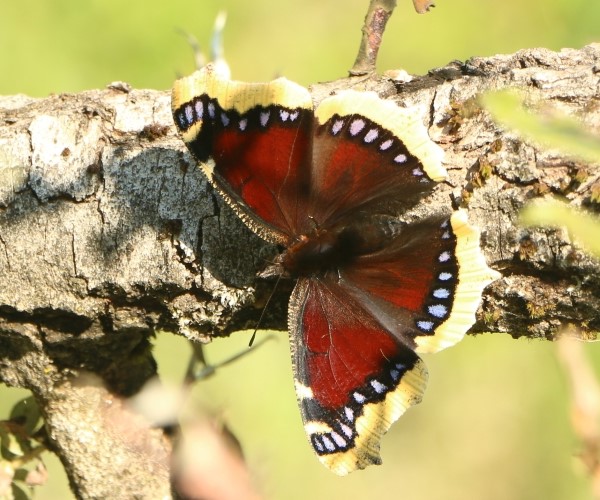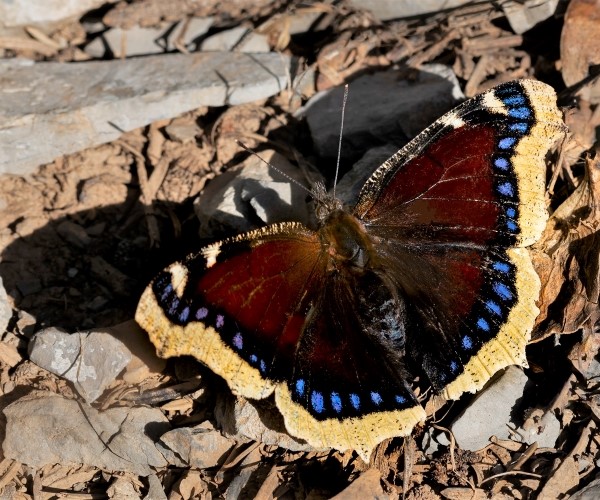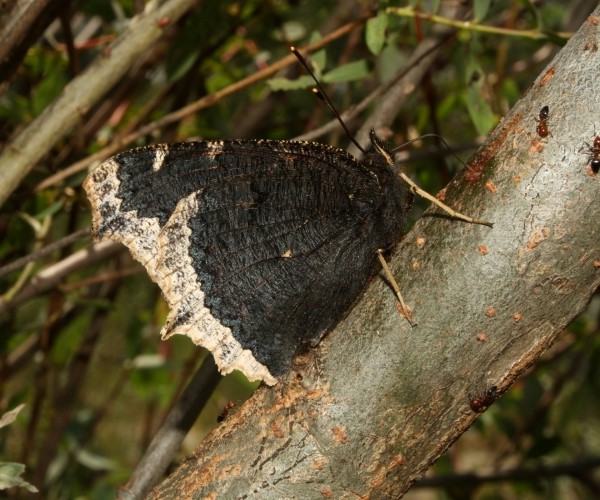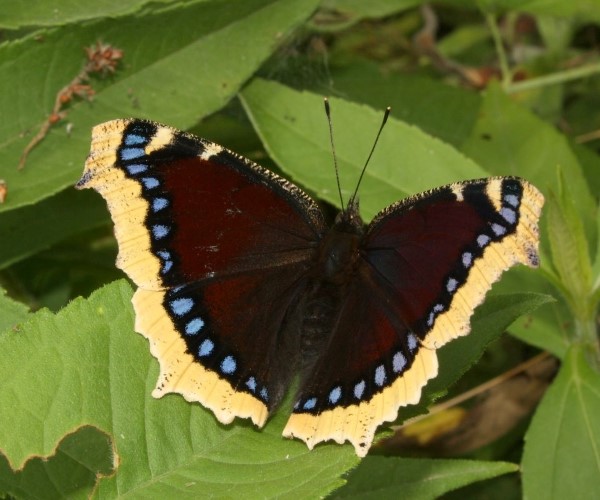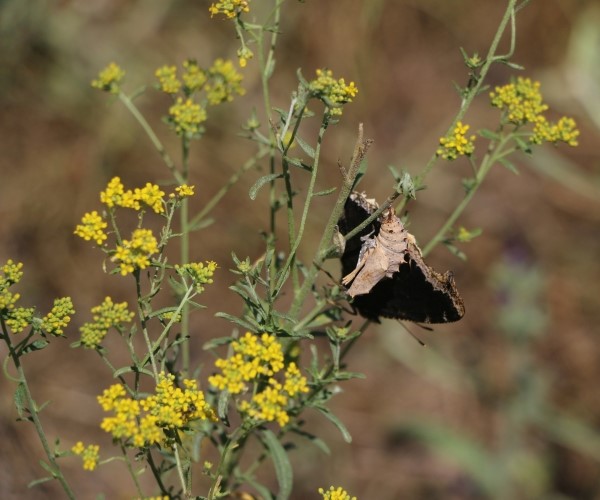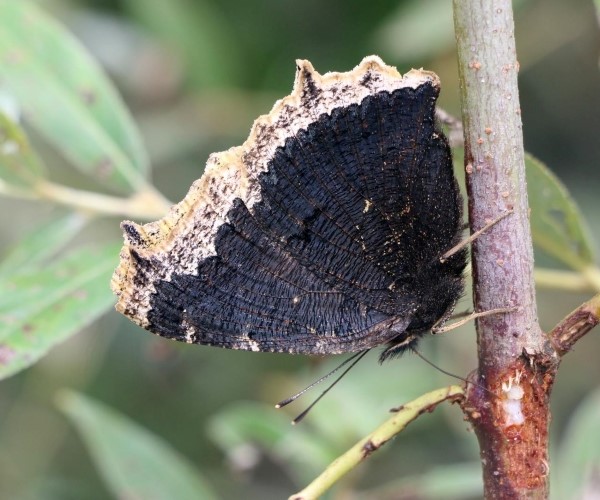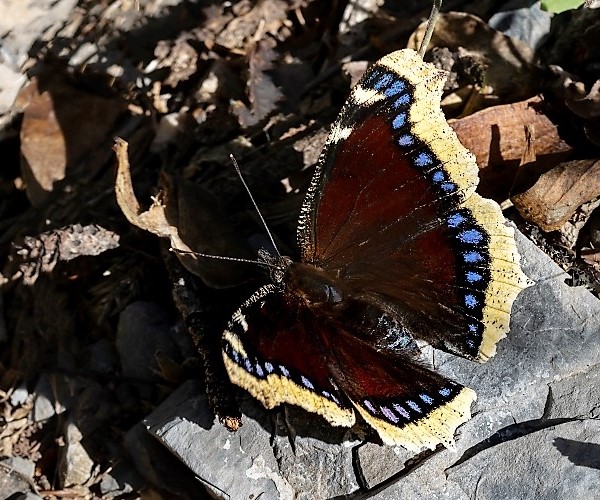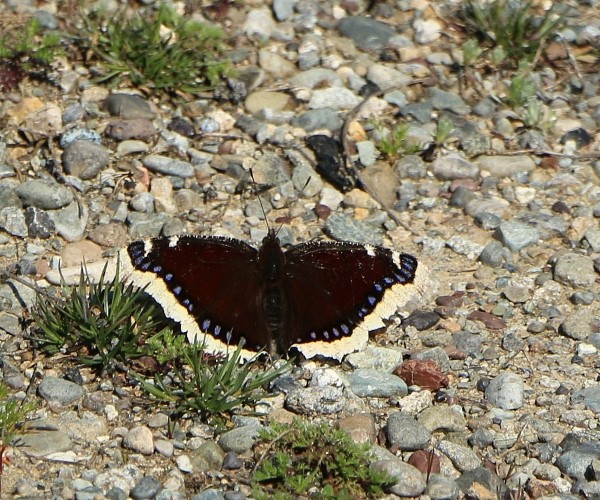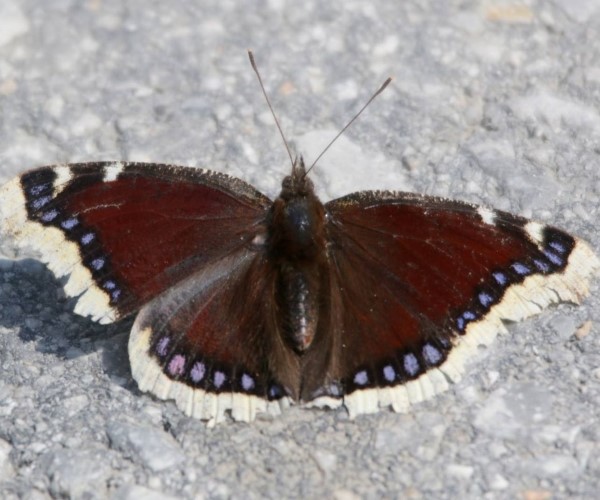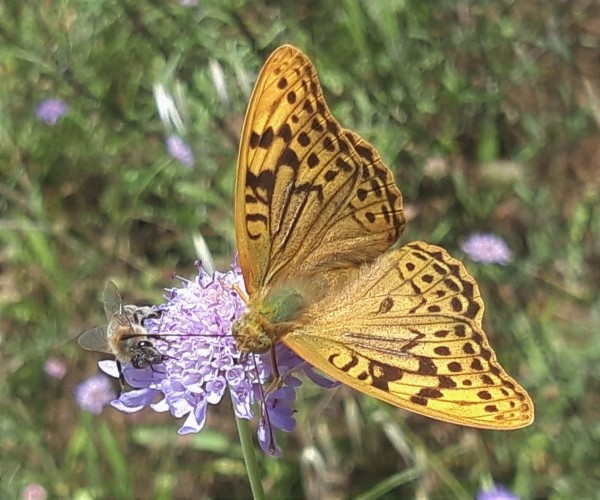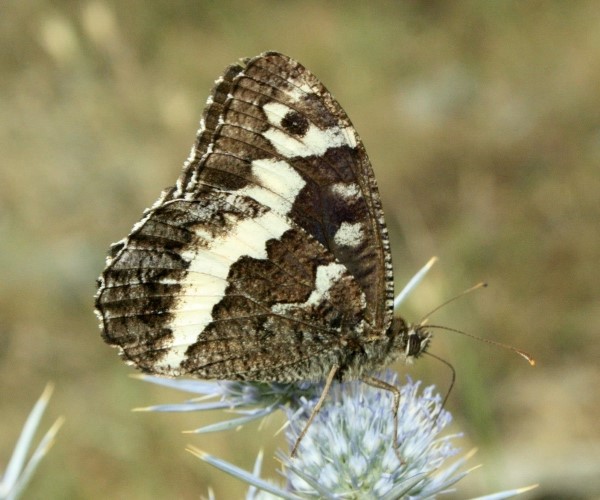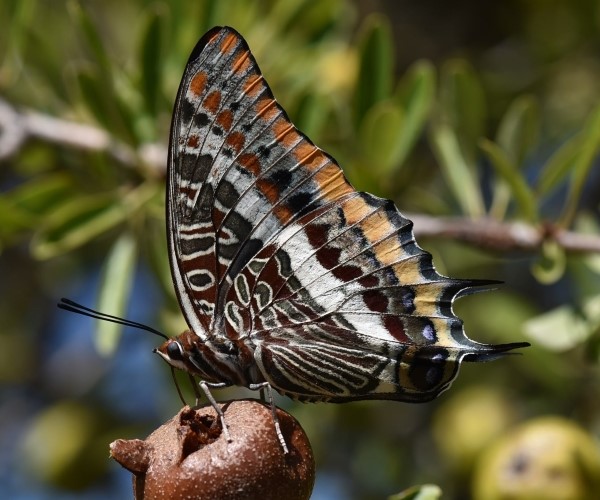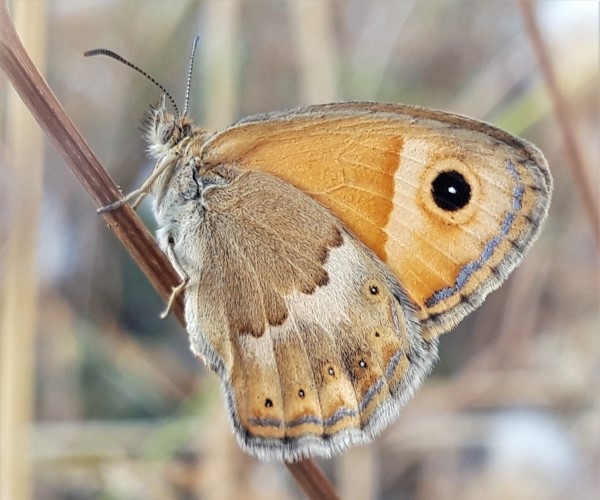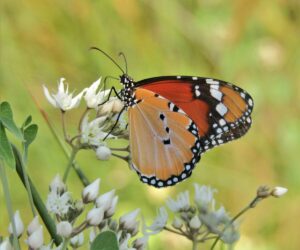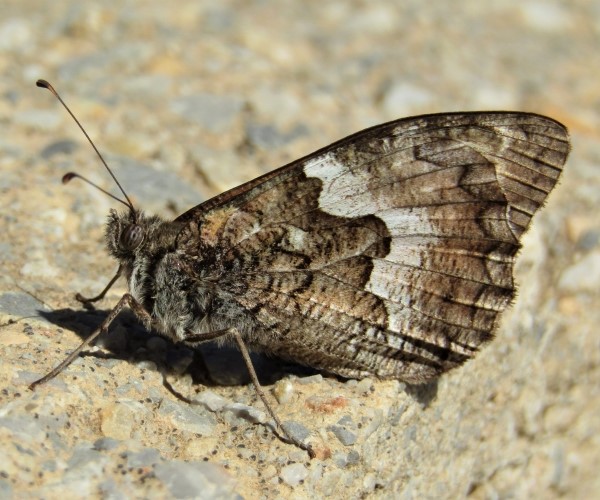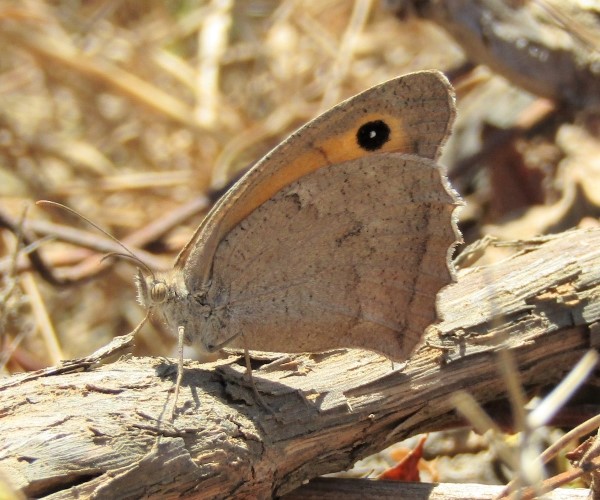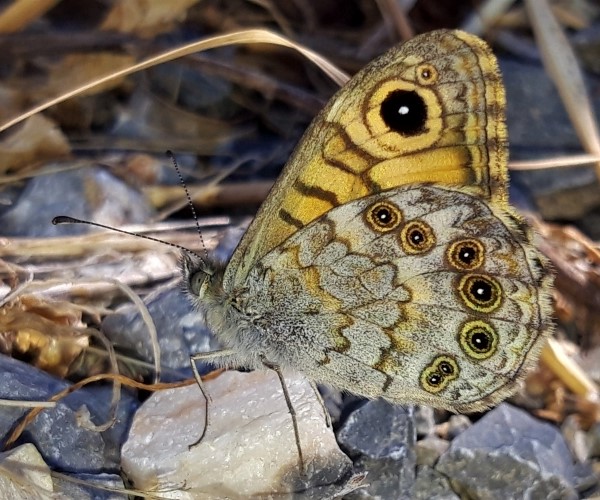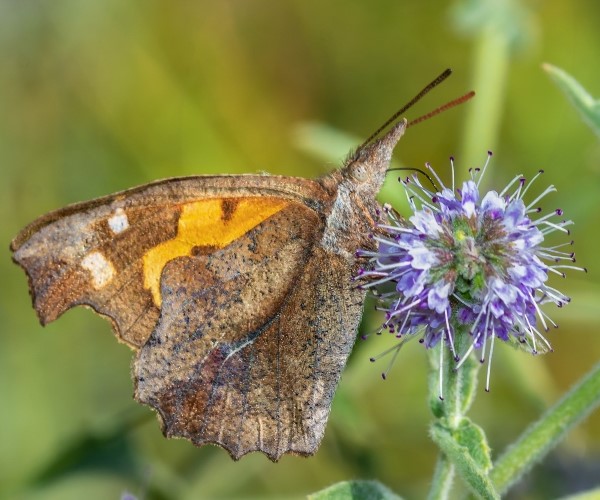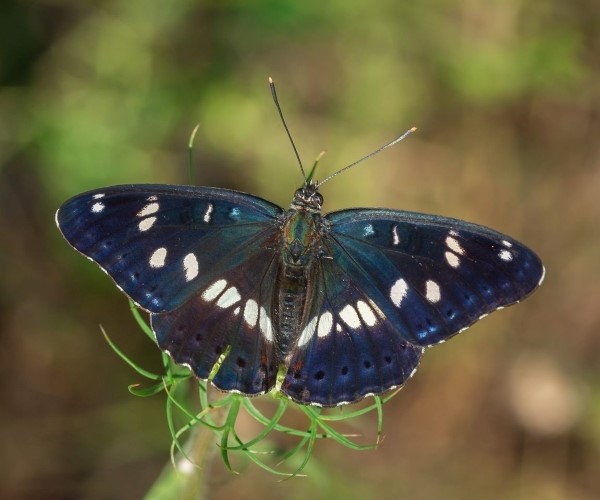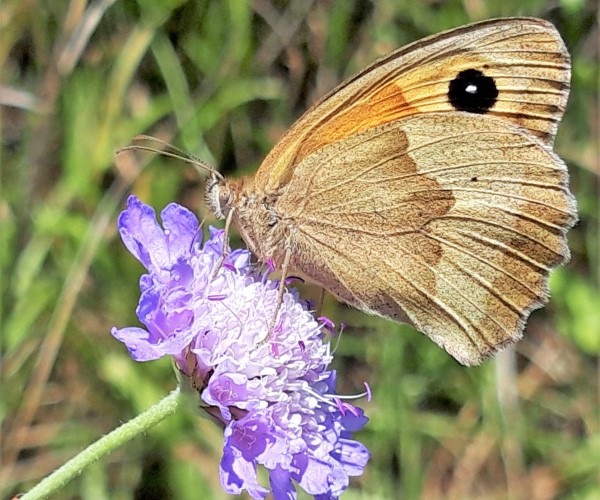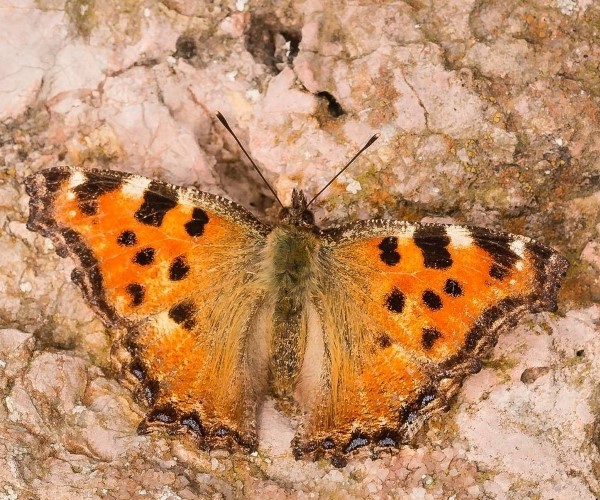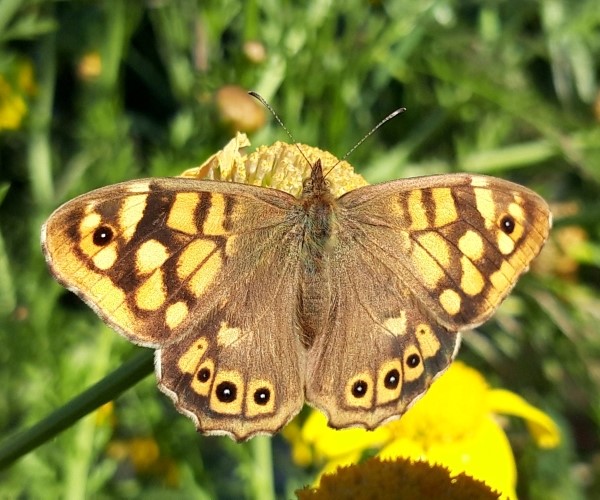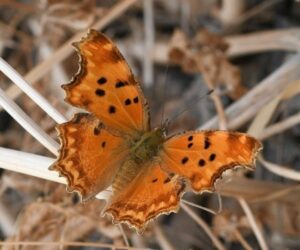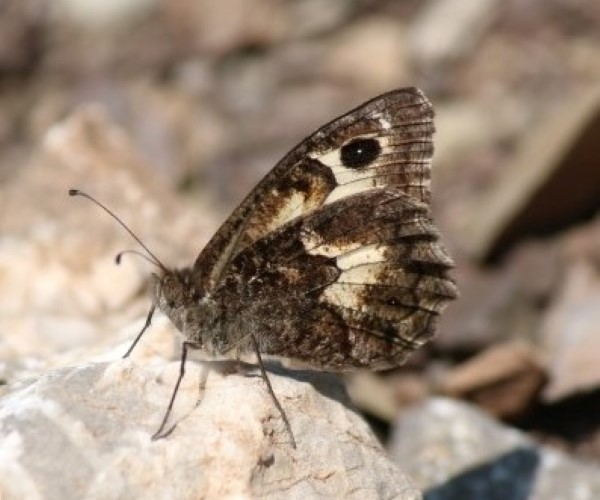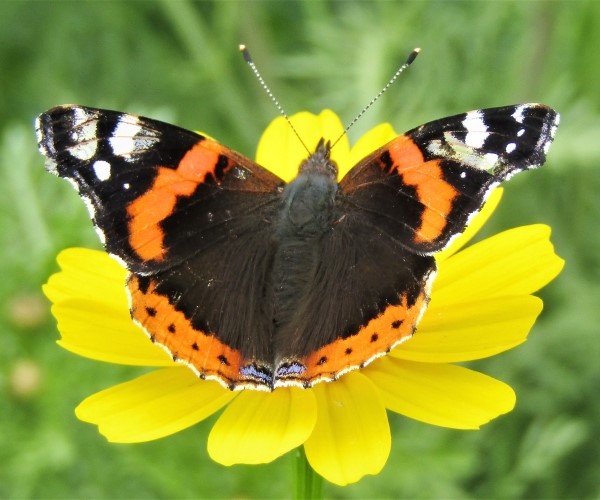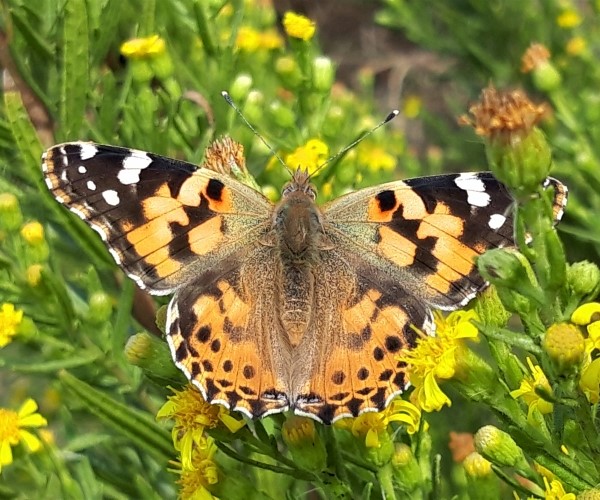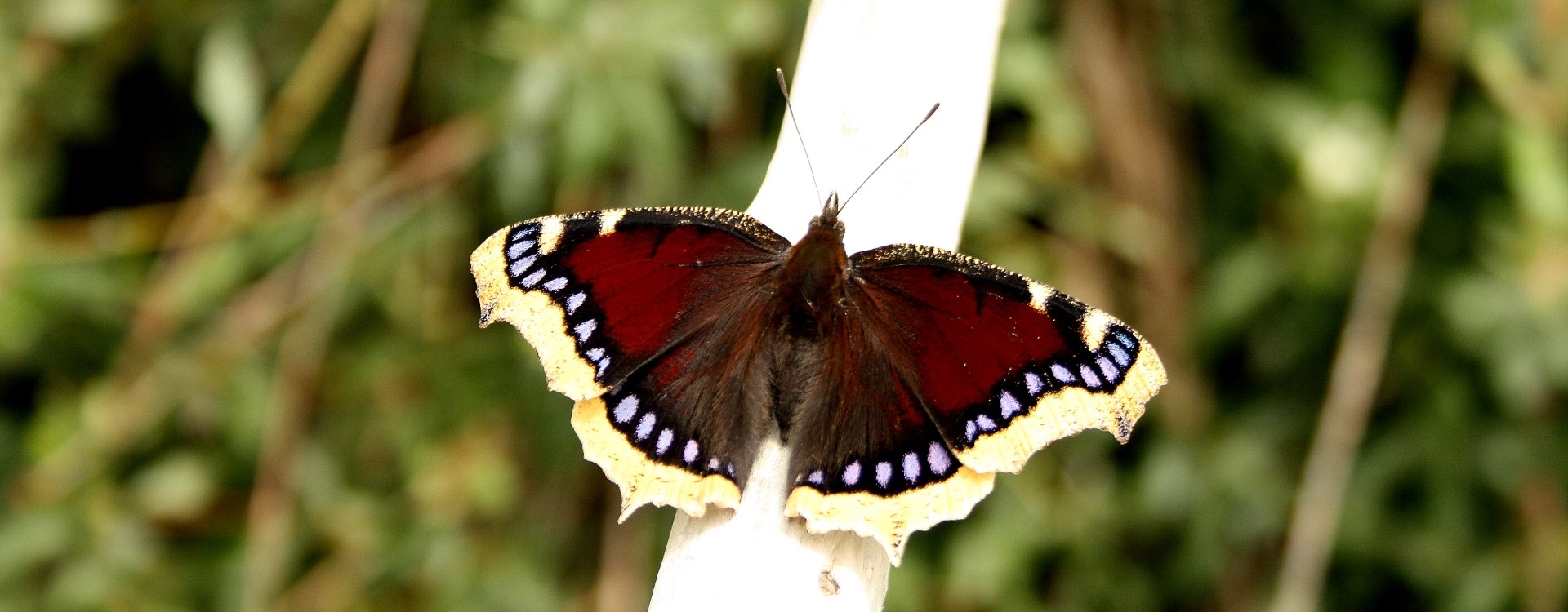
Nymphalis antiopa, Grevena - photo © Xristos Dimadis
Nymphalis antiopa
BUTTERFLY INFO
Nymphalis antiopa is a butterfly of the family Nymphalidae on the island of Crete, Greece.
Scientific name
Nymphalis antiopa (Linnaeus, 1758)
Common name
Camberwell Beauty
Classification
Family: Nymphalidae > Subfamily: Nymphalinae > Tribus: Nymphalini > Genus: Nymphalis
Wingspan
Male to female: 60-70 mm
Appearance
Both sexes have a similar appearance. The dorsal side of the wings is dark maroon colored with pale-yellow color in the submarginal area and there are bright, iridescent blue spots in the postdiscal area. The ventral side of the wings is very dark brown, almost black with similar pale-yellow edges.
It has a unique appearance in Crete and can’t be confused with other butterflies of the island.
Behavior
Adults hibernate from December to February. Usually, they keep the wings closed when sitting on the ground. The butterflies are difficult to be located and they often prefer rotting fruits and sweating face or hands.
Habitat
Nymphalis antiopa in Crete lives in forest edges, forest paths, glades, orchards.
Food plant
The larva feeds on Salicaceae plants.
Flight period*
The butterfly flies in one generation per year.
| Jan | Feb | Mar | Apr | May | Jun | Jul | Aug | Sep | Oct | Nov | Dec |
*based on a few observations on the island
Remarks
Nymphalis antiopa is a very rare sighting in Crete and hasn’t been spotted in over two decades (the last observation was on East Chania prefecture). Further investigation is required for its current existence in possible habitats on Crete.
Status*
Least Concern (LC)
Nymphalis antiopa Distribution Map

based on http://www.pamperis.gr/THE_BUTTERFLIES_OF_GREECE/MAPS.html
